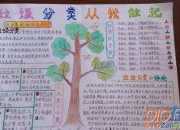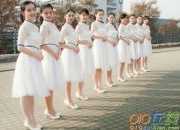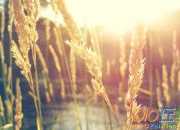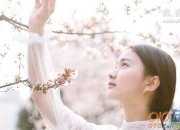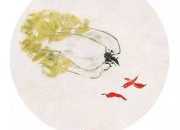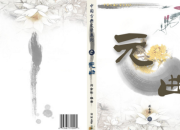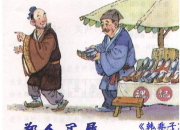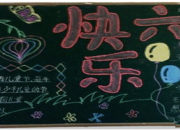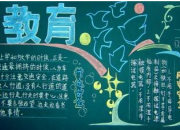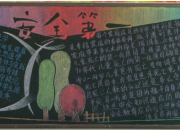丽江古城英文导游词
时间:2021-08-31丽江古城英文导游词
篇一:丽江的英文导游词
介绍1
Hello everyone.My name is Yang yifei,you can call me xiaoyang if you like.It is a honour for me to have the chance
to introduce the lijiang to you.
丽江的英文导游词介绍
It is said there is a fairyland beneath the colorful clouds of southern China. A place blessed with fresh air, clear streams, breathtaking snow-capped mountains, and an undisturbed landscape inhabited by a friendly group of people. Life in this fairyland is so peaceful, a fairyland called Lijiang, located at the hub of Tibet, Yunnan and Sichuan provinces.
这是说,有中国南方下五彩缤纷的云仙境。空气清新的得天独厚的地方,清澈的溪流,美不胜收的雪山,以及不受干扰的景观由人民的友好集团居住。在这仙境生活是如此宁静,仙境称为丽江,在西藏,云南,四川等省的枢纽位置。
Lijiang is a beautiful shining jewel on the Northwest Yunnan Plateau neighboring the southeast side of the Tibetan Plateau which is considered to be the "Roof of the World". It is impressive because of its scenery and lush vegetation.
Lijiang boasts of breath-taking wonderful sights such as Jade Dragon Snow Mountain and its modern maritime glacier, the only one of its kind in the southern end of the Northern Hemisphere; Tiger Leaping Gorge; the world - famous grand canyon; Lugu Lake, the cultural cradle of the "Matriarchy" of the Yongning Mosuo people in Ninglang. Lijiang Town is officially called "Dayan Town"—— "Dayan" literally means a "great inkstab", a graphic description of the town’s location on a piece of rich flatland fed by a river and surrounded by green mountains. There is no other town in China like Dayan which incorporates the folkways of so many people and the architectural styles of both north and south China.
The people of Naxi, while developing their land of snow-clad mountains and turbulent rivers since ancient times, have to their credit the "Dong Ba Culture" seen as one of the world wonders, a culture all-embracing while unique.
All these natural sceneries and these cultural treasures of the minority peoples have been continuously drawing tourists from all over the world and have recently vote Lijiang as one of the favorite destinations in China.
Notes:
1. Lijiang 丽江
2. Roof of the World 世界屋脊
3. Jade Dragon Snow Mountain 玉龙雪山
4. Tiger-leaping Gorge 虎跳峡
丽江是一个美丽闪耀在滇西北高原明珠相邻的青藏高原被认为是“世界的屋脊“的东南侧。这是因为它的风景和令人印象深刻的茂密植被丽江惊人的,如玉龙雪山和冰川的现代化海上,其在北半球南端绝无仅有的美妙景观拥有。虎跳峡;世界 -著名的大峡谷国家公园,泸沽湖的“母权制“的宁蒗永宁摩梭人文化的摇篮。丽江古城被正式称为“大研镇“ - ”大雁“的字面意思是“伟大的inkstab“,一个城市的位置上喂一河和青山环抱一块平地丰富生动地描述。有没有像中国其他城市的大雁集成了这么多人,这两个北部和南部的中国建筑风格。纳西族人民的风俗习惯,同时发展他们的积雪覆盖的群山和湍急的河流,自古以来土地,有到了自己的信用“董巴文化“为一体的世界奇观之一看到,一种文化无所不包,而唯一的。所有这些自然景观和少数民族人民这些文化瑰宝不断吸取世界各地的游客,最近投票的最喜爱的目的地之一,中国丽江
I think you will enjoy a good time.That's all ,thank you!
旅游英语:丽江英语导游词 It is said there is a fairyland beneath the colorful clouds of southern China. A place blessed with fresh air, clear streams, breathtaking snow-capped mountains, and an undisturbed landscape inhabited by a friendly group of people. Life in this fairyland is so peaceful, a fairyland called Lijiang, located at the hub of Tibet, Yunnan and Sichuan provinces.
While the geographical position of Lijiang City is remote, it has the advantage of ensuring a pleasant year round climate and a wide variety of tourist resources in the 20,600 square kilometers area. The earliest recorded history of Lijiang can be traced back to the Warring States Period (476 BC-221 BC) but with the advent of the Tang Dynasty (618-907), the local economy reached a peak with the development of the Ancient Tea-Horse Road which made a great contribution to both commercial and cultural communication between Tibet, Sichuan and Yunnan provinces.
At present, Lijiang City is an attractive tourist destination in Yunnan Province that exercises jurisdiction over four counties and an Old Town District. Lijiang is the main region inhabited by Naxi Group, one of China's 55 minority ethnic groups. In its long history, the local residents have established their splendid Dongba Culture which has absorbed aspects of the culture of Tibet and the Central Plains along the middle and lower reaches of the Yellow River. The various souvenirs marked with these Dongba hieroglyphs are very popular with visitors from home and abroad.
Lijiang has the best preserved ancient town in China - the Old Town which has been listed in the World Cultural Heritages by UNESCO in 1997. The Old Town was once the center of Lijiang and continues to maintain the original flavor of the local lifestyle, the typical groups of buildings and the profound cultural heritage of the region. When wandering along Square Street or any other streets in the Old Town, you will be struck by the peaceful surroundings. From enjoying the sight of the setting sun from historic hotels to local farmsteads, there are many favorable things here for travelers. Naturally, there are a number of tour destinations to enhance your visit as well. Among them, the most famous is Mufu (Mu's Palace) which should not be missed during your trip.
Around Lijiang, there are a number of splendid natural beauty spots that will certainly astonish you. If you like to see superlative natural scenery, Jade Dragon Snow Mountain which provides a majestic backdrop to the Moon-Embracing Pavilion at Black Dragon Pond will fulfill your desire. For those seeking an exotic experience in Lijiang, a visit to the Mosuo People beside Lugu Lake is a must. They are called the last 'Kingdom of Women' on earth. If you would like to experience the local lifestyle, then come and participate in one or more of their various festivals that are held throughout the year.
Lijiang does not have a direct rail link and is reached by travelers by air or by coach. However, having got to Lijiang, visiting round and about is easy with the help of the city buses, taxis or for the more energetic by bicycle. However, please don't forget to save some time to walk in Lijiang. Along your way, you must visit some of the souvenir shops and taste some local dishes and snacks. At night, the famous bar street in the Old Town is really worth a visit. No matter where you go, you will find a harmonious combination of tradition and fashion in Lijiang City.
The smart and unsophisticated Naxi people who have long inhabited Lijiang preserve the unique and profuse Dongba Culture. In fact, a great number of scholars and travelers are attracted to this mysterious place more for the culture than its charming sceneries. Dongba Culture is of a religious nature and make up the most important component of the ancient Naxi culture.
However, before the form of the Dongba Culture, the Naxi people in Lijiang followed the native religion of sorcery. During the Tang (618-907) and Song (960-1279)
dynasties, a series of the other cultures, such as the Tibetan Bon Religion, Buddhism and Taoism, were introduced into this region, affecting the native religion. Along with the impact and blending among these various cultures, the new Dongba Religion was founded. The Dongba Culture is said to been passed on by the Dongbas who were sages that integrated song, dance, the classics, history, painting and medicine. They enjoyed a high social position within the Naxi group because they were
considered as mediums between humans, gods and ghosts, as well as are able to remove disasters and guarantee good fortunes. At present, there are no more than 30 Dongbas living in Lijiang, so it is a memorable experience for travelers to visit these Dongbas.
Dongba Characters
The immense Dongba Culture consists of its writings, scriptures, paintings, dance and music. Amongst them, the Dongba characters are not surprisingly the soul of the Dongba Culture. Enjoying a history of over 1,000 years, it is still used by a few Naxi people even now. At first, the Dongba character was just a kind of hieroglyphic recorded on wood and stone. Later, with the use of paper, the use of characters gained popularity and gained its formal name. As a rare cultural treasure for all mankind, the Dongba character is the only existing hieroglyphic in China and praised to be the 'Living Fossil' showing the characters' origin and development of human society.
Dongba Scriptures
All Dongba scriptures were written in the picture-like characters, so they are not interpretable by ordinary folk. However, under the help of the Dongbas, some scriptures were translated into Mandarin and shown to readers at the end of the last century. These scriptures contain almost all aspects of the Naxi people, ranging from the nation's legends and history to traditional dancing and music. Now, these Dongba scriptures are kept in many countries other than China, such as the United States of America, Canada, Japan, Britain, France, Germany and Austria.
Dongba Paintings
Traditionally, the exquisite and colorful Dongba paintings completely reveal the beliefs and good wishes of the Naxi people. Some of them are drawn to depict the daily lives of locals. The most famous Dongba painting is the Painting of Sacred Road to Heaven which is approximately 14 meters long and 0.26 meters wide. This painting tells the story of how the dying man's soul is released from suffering. Vivid scenes describe how he passes into Hell, the human world, the natural heaven
and finally Heaven. Nowadays, local artisans have created a series of modern Dongba paintings that retain the essence of those from more traditional times.
Dongba Dance and Music
The same to the other minorities, dance and music play vital roles in the Naxi people's daily life. The classical Naxi dance is the Dongba dance which is a kind of religious dance being played in the sacrifice events. However, most of these dancing show the locals' fight against the natural world and the forces of evil. There are about 60 kinds of dance recorded in two Dongba scriptures, including animal dance, sword and bow dance as well as the God dance. In fact, most of dance movements prefer to imitate animals, such as tiger, elephant, frog, monkey and eagle.
In the sacrifice events of Dongba Religion, the dance is usually accompanied with the Dongba music (also the Naxi Ancient Music). The content of these music is mainly derived from the scriptures and widely singing by the Naxi people. The used
instruments include ring, drum, gong and cymbal, producing simple but impressive rhythm. Fortunately, when come to Lijiang, traveler can enjoy the Dongba dance and music shows in the Dongba Palace and Naxi Concert Hall.
这是说,有中国南方下五彩缤纷的云仙境。空气清新的得天独厚的地方,清澈的溪流,美不胜收的雪山,以及不受干扰的景观由人民的友好集团居住。在这仙境生活是如此宁静,仙境称为丽江,在西藏,云南,四川等省的枢纽位置。 尽管丽江市地理位置偏远,它有责任确保全年宜人的气候和旅游资源的20,600平方公里的多种优势。最早的文字记载的历史丽江可追溯至战国时期(公元前
,但与唐王朝(公元618-907年)的出现,当地的经济达476年,公元前221年)
到了与古代茶叶发展高峰马道路作出了巨大贡献,同时与西藏,四川和云南两省的商业和文化交流。
目前,丽江市是云南省吸引力的旅游目的地,行使管辖权四县和古城区。丽江是纳西族的主要区域的集团,中国55个少数民族之一居住。在悠久的历史,当地居民都建立了灿烂的东巴文化已吸收了西藏与中原的中部和沿黄河下游文化方面。东巴象形文字与这些标记的各种纪念品都非常国内外游客欢迎。
丽江在中国保存最完整的古城 - 旧城区已被联合国教科文组织列入世界文化遗产在1997年。旧城区曾是丽江中心,继续保持原有生活方式的地方风味,建筑物的典型群体和深厚的地区的文化遗产。当沿坊街或在任何其他街道的旧城区漫步,你会惊讶的和平环境。从欣赏夕阳的视线从历史的酒店,当地农庄,也有许多有利的东西在这里的旅客。当然,还有一些旅游目的地的数量,以提高您的访问以及。其中,最有名的是木府(木府),它不应该在你的旅程错过。
丽江周边,有许多壮丽的自然风景点,那一定会让你们许多震惊。如果你想看看绝妙的自然风光,玉龙雪山提供了一个向月球包罗馆黑龙潭雄伟的大背景下将实现你的愿望。对于寻求在丽江的摩梭人参观异国经验的泸沽湖是必须的。他们被
